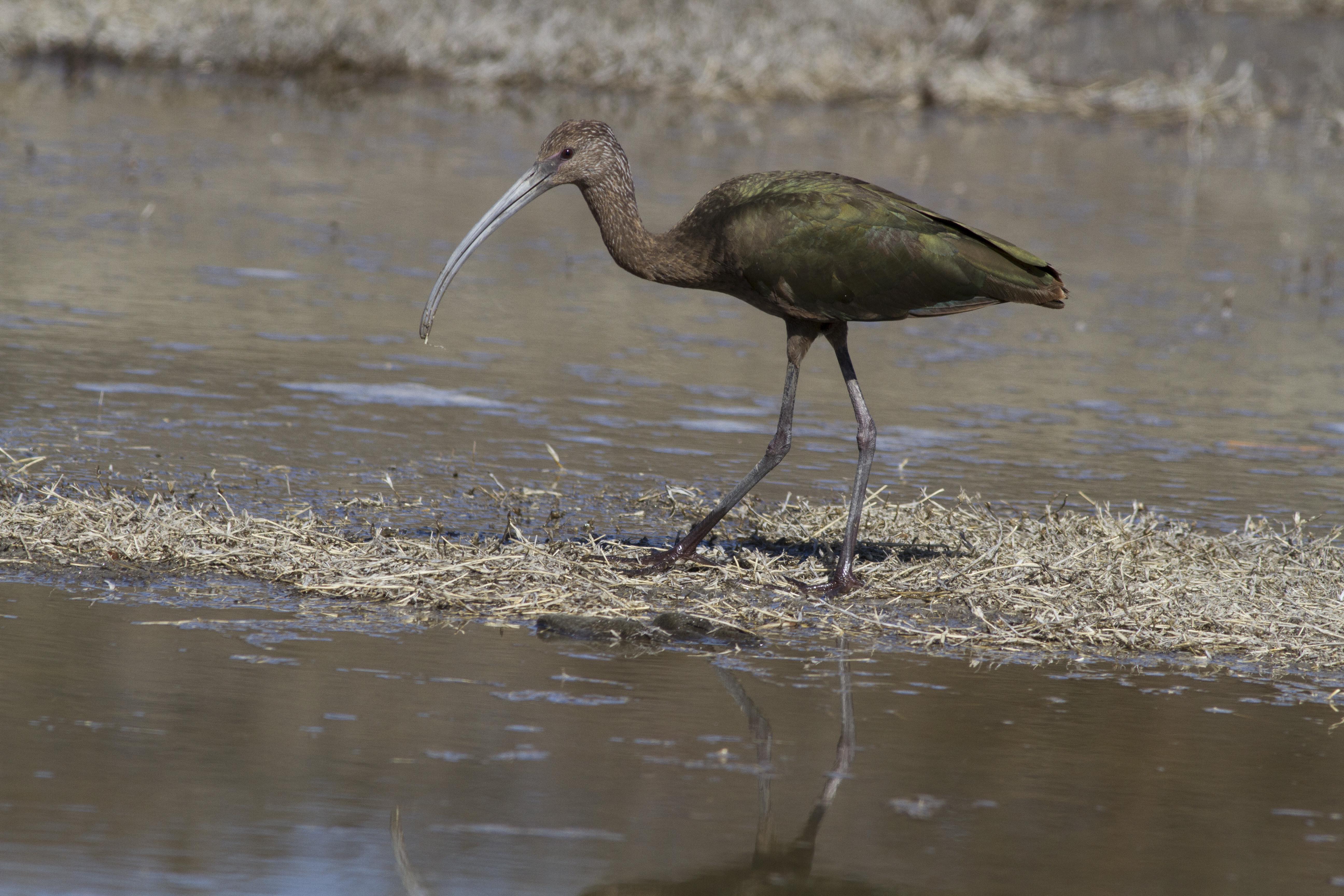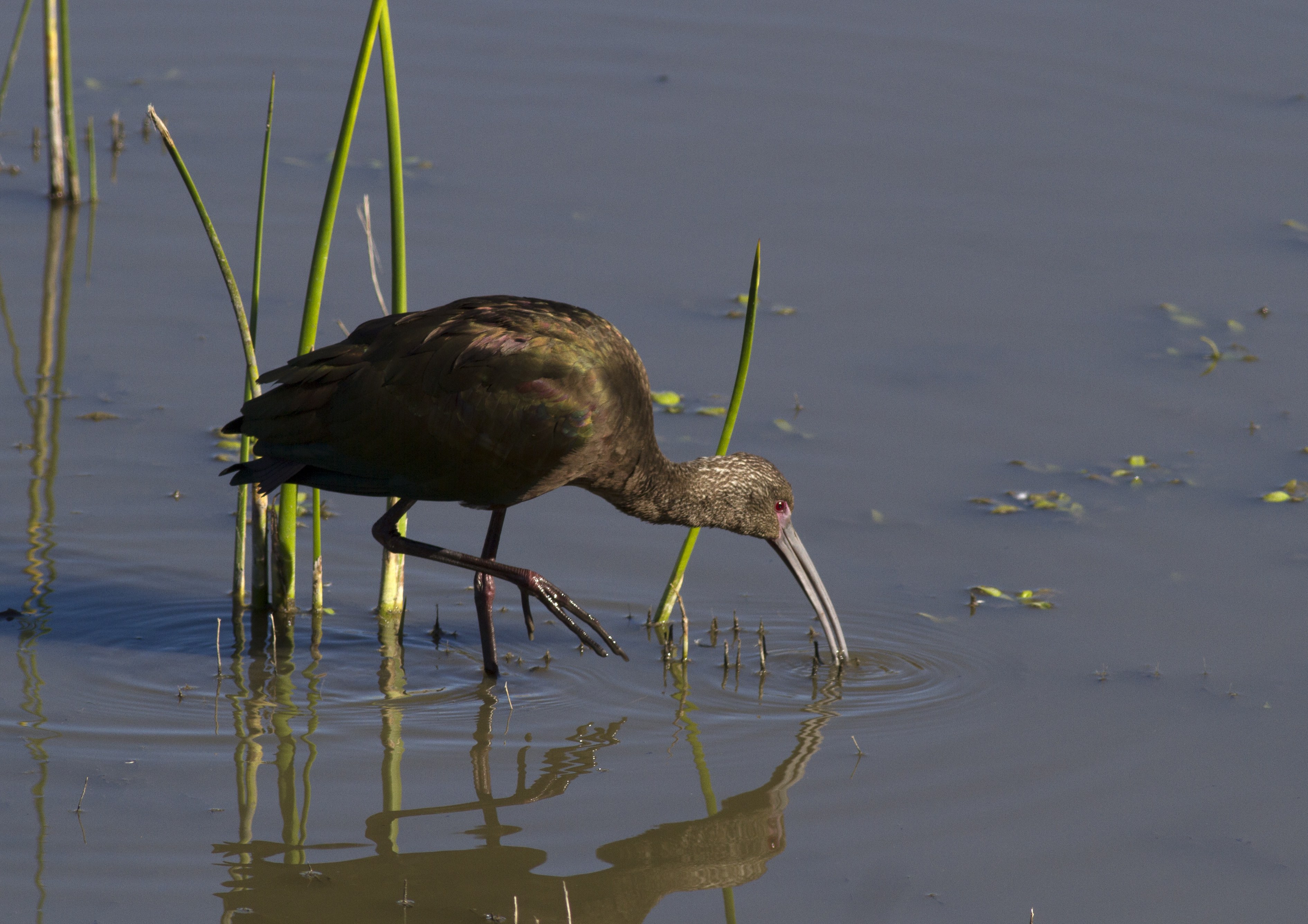Current Distribution Rangewide
Ranges from California, eastern Oregon, southern Idaho, Utah, Montana, southern North Dakota, northwestern Iowa, and southwestern Minnesota south into Mexico, coastal Texas, and southwestern Louisiana, southern Alabama, Florida [1;2]. Also found in South America in southwestern Peru, Bolivia, Paraguay, Uruguay, southern Brazil, northern and central Chile, and northern and central Argentina [3;4; both cited in 1;5, cited in 2] during the breeding season. In the non-breeding season, ranges from north to southern California, Baja California, southern Texas, and coastal Louisiana, south through lowlands to Guatemala and El Salvador, and generally in breeding range in South America [1;5, cited in 2].
Known Populations in San Diego County
Known to occur in the lower Santa Margarita and San Luis Rey River Valleys, northern San Diego County coastal lagoons, and up Escondido Creek and the San Dieguito River to the San Pasqual Valley during the breeding season. Winters primarily in the San Pasqual Valley and occassionally in Ramona and Dairy Mart Pond [6].
List Status
None.
Habitat Affinities
Inhabits primarily freshwater wetlands and marshes, especially those containing cattail (Typha spp.) and bulrush (Scirpus spp.)[6] , and flooded stands of saltcedar (Tamarix spp.) and Baltic rush (Juncus balticus) [7, cited in 1]. Also found in ponds, mudflats, and swamps outside of California [1]. In San Diego County, depends on dense freshwater marshes for nesting and forages in shallow water, wet grass, and irrigated or flooded pastures and croplands [6;8, cited in 9].
Taxonomy and Genetics
Sometimes considered conspecific with the Glossy ibis, P. falcinellus [2]. No genetic studies have investigated the genetic divergence of these two groups [10], though hybrids have been produced in captivity [1].
Seasonal Activity
Diurnal [2;9]. Several days before nesting, roosts near or within colony site surrounded by emergent vegetation such as cattails, bulrushes, and reeds or low shrubs over water [1;11, cited in 9]. Winters mainly in San Joaquin Valley and Imperial Valley, but recorded widely as transient [9]. Birds breeding in the Great Basin migrate to the Imperial Valley [12].
Life History/Reproduction
Gregarious [2]. Nest in large colonies that range in size from 30-50 nests in new colonies and up to more than 1500 in established colonies [13]. First breed around 2 years of age [13;14]. Average distance of 2 meters between nests [15] and typically defend one meter area around nest [16, cited in 10]. Nests made up of dead tules and cattails supported on leaves bent over to make a crude platform [6;9]. Lay eggs from the last week of March to mid-May [6]. Incubation begins soon after first egg is laid with average incubation period ranging from 20-22 days [2;17, cited in 10;18, cited in 9]. Clutch usually 3-4 eggs [2;18, cited in 9]. Young are born semi-altricial and fledge at 28 days [13]. Young are independent at 8 weeks of age [17, cited in 10]. Live to about 14 years of age in captivity and from 9 to 11 years of age in the wild [19].
Diet and Foraging
Diet consists mostly of insects and their larvae, crustaceans, earthworms, small fish, and amphibians [18, cited in 9;20]. May also consume crayfish, snails, spiders, and leeches. Locate prey using two different quatic methods: a ranging method while probing the water and a stationary method swinging its bill side-to-side. Observed to drink water [16, cited in 9].
Dispersal
Highly mobile [1]. Wander greatly depending on water conditions and the availbility of prey. Prebreeding wandering seems more prevalent than postbreeding [18]. Adults and subadults wander far from breeding areas during late summer [1]. Beginning by late July, post breeding dispersal or fall migration commences and is substantial by late August [6].
Threats
Threatened by development of the floodplains [6].
Literature Sources
[1] Ryder, R. A. and D. E. Manry. 1994. White-faced Ibis (Plegadis chihi), version 2.0. In The Birds of North America (P. G. Rodewald, editor). Cornell Lab of Ornithology, Ithaca, New York, USA. Available: https://birdsna.org/Species-Account/bna/species/whfibi/introduction. Accessed: November 22, 2017.
[2] NatureServe. 2017. NatureServe Explorer: An online encyclopedia of life [web application]. Version 7.1.NatureServe, Arlington, Virginia. Available: http://explorer.natureserve.
[3] Blake, E. R. 1977. Manual of Neotropical Birds. University of Chicago Press.org. Accessed: November 06, 2017.
[4] Fjeldså, J. and N. K. Krabbe. 1990. Birds of the High Andes. Museum Tusculanum.
[5] American Ornithologists' Union (AOU). 1983. Check-list of North American Birds, 6th edition. Washington, D.C.
[6] Unitt, P. 2004. San Diego County Bird Atlas. San Diego, CA. San Diego Natural History Museum.Â
[7] Ivey, G. L. and D. J. Severson. 1984. White-faced ibis Nesting in the southern San Joaquin Valley of California. The Condor 86(4): 492-493.
[8] Garrett, K. and J. Dunn. 1981. Birds of Southern California: Status and Distribution. Los Angeles Audubon Society.
[9] Granholm, S. 2005. White-Faced Ibis. Duke, R. ed. California's Wildlife. Vol. I-III. California Depart.
of Fish and Game, Sacramento, California.
[10] Darkâ€Smiley, D. and D. A. Keinath. 2003. Species Assessment for Whiteâ€faced Ibis (Plegadis chihi) in Wyoming. United States Department of the Interior, Bureau of Land Management, State Office Cheyenne, Wyoming.
[11] Alford, E. H. 1978. Early Nesting by White-faced Ibis in Relation to Habitat: An Adaptive Advantage. PhD dissertation, Brigham Young University.
[12] Patten, M. A., McGaskie, G., and Unitt, P. 2003. Birds of the Salton Sea: Status, Biogeography, and Ecology. Berkeley: University of California Press.
[13] Trost, C.H. 1989. White-faced Ibis (Plegadis chihi). In Rare, Sensitive, and Threatened Species of the
Greater Yellowstone Ecosystem, eds. Clark, T.W., A.H. Harvey, R.D. Dorn, D.L. Genter, and C. Groves,
Eds. Northern Rockies Conservation Cooperative, Montana Natural Heritage Program, The Nature
Conservancy-Idaho, Montana, and Wyoming Field Offices, Mountain West Environmental Services.
[14] Capen, D. E. 1977. Eggshell Thickness Variability in the White-faced Ibis."Â The Wilson Bulletin, 99-106.
[15] Burger, J. and L. M. Miller. 1977. Colony and Nest Site Selection in White-faced and Glossy Ibises. The Auk, 664-676.
[16] Belknap, H. W. 1957. Observations on the White-faced Ibis, Plegadis chihi, in Louisiana. PhD dissertation, Louisiana State University.
[17] Kotter, B. L. 1970. An Ecological Natural History of the White-faced Ibis (Plegadis chihi) in northern Utah.
Master’s thesis, University of Utah, Salt Lake City.
[18] Cogswell, H. L. 1977. Water Birds of California. Berkeley: University of California Press.
[19] Ryder, R. A. 1967. Distribution, Migration and Mortality of the White-faced Ibis (Plegadis chihi) in North America. Bird-Banding 38(4): 257-277.
[20] Kaufmann, Kenn. Reddish Egret. Audubon. Available: www.audubon.org/field-guide/bird/reddish-egret. Accessed: November 14, 2017.

